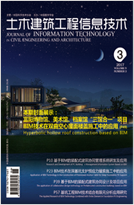Abstract:
There is anecdotal evidence that the adoption of building information modeling (BIM) is on the increase. However, the extent to which quantity surveyors (QS) (also referred to as cost consultants or cost engineers) are now using BIM features is not clear. The research reported in this paper was aimed at understanding the BIM experience of QS firms and cost consultants in Australia as well as to understand the progress they have made towards the use of BIM features. Data collection was a web-based survey of 180 QS firms with 40 responses and two in-depth interviews. Findings from the study show that BIM features are not readily used by QS firms owing to uncertainties concerning the integrity of three-dimensional (3D) models issued by designers, incomplete information in models, lack of knowledge concerning new business processes to drive the use of BIM use, lack of demand by clients, cost of implementing BIM features within the existing practice and learning time required to adopt BIM features. It appears that most of the firms have experience in computer aided take-off with twodimensional (2D) drawing in the project's front end tasks such as cost planning and bill of quantities. Most of them have little experience with automated extraction of quantities using 3D models. Only one experience the use of BIM features in contract administration duties. 3D computer-aided drawing (CAD) drawings are used only for visualization. In many BIM-based projects reported, cost consultants were not issued the 3D BIM developed by designers; instead, 2D drawings were issued to the QS for quantity take-off and cost estimation. In cases where automatic quantity extraction was performed using 3D models, there seems to be lack of clarity concerning the time savings achieved because the QS spent more time checking the accuracy of the 3D model prior to quantity extraction as well as sorting, and splitting take-off items. In the absence of trust in the integrity of 3D models, QS would prefer to use the manual on screen take-off using 2D drawings and 3D for visualization. Also, in the absence of industry-wide standard for classifying, and coding construction works, QS would have no incentive to switch to five-dimensional (5D) BIM estimating. Ways of increasing the use of BIM features by QS are highlighted.










 下载:
下载: